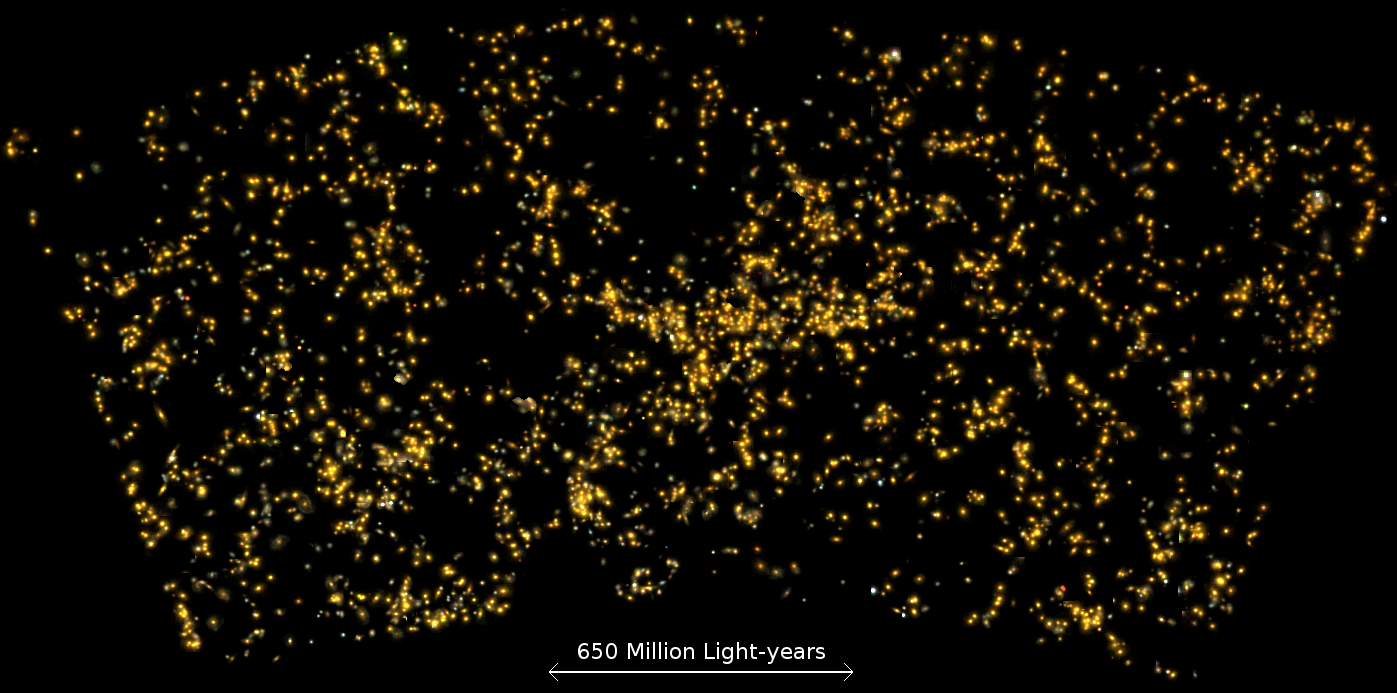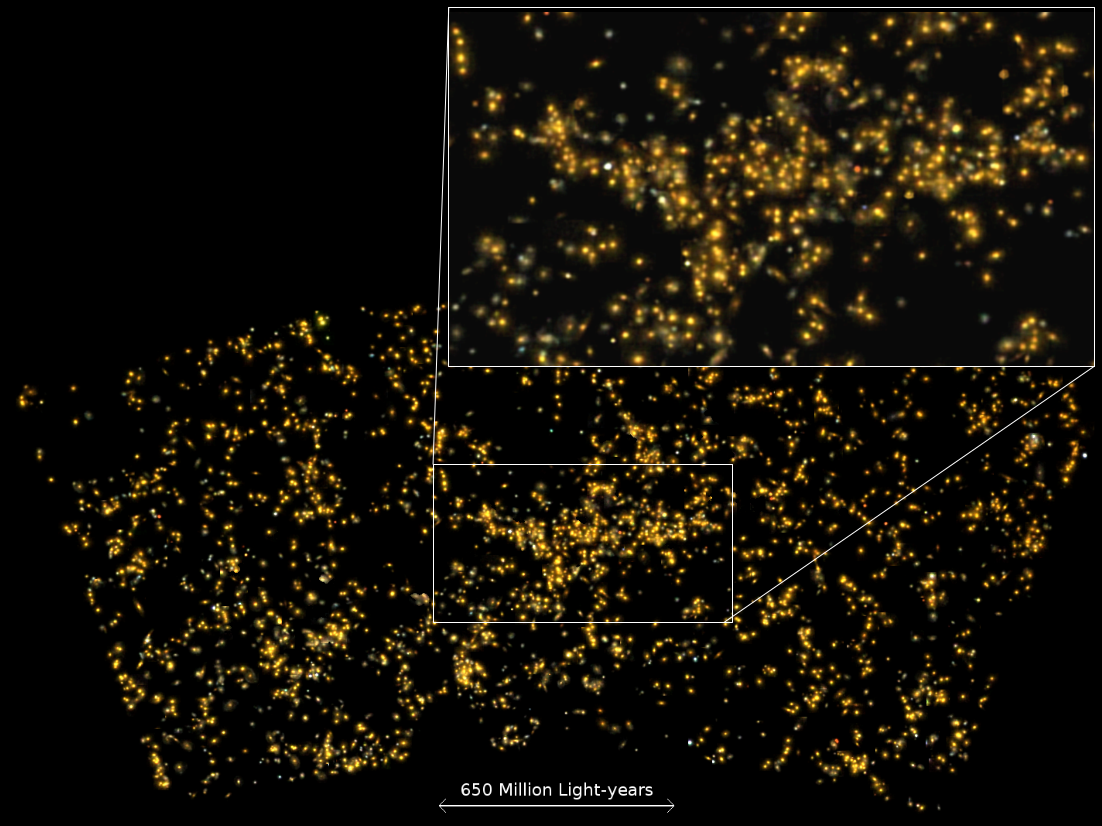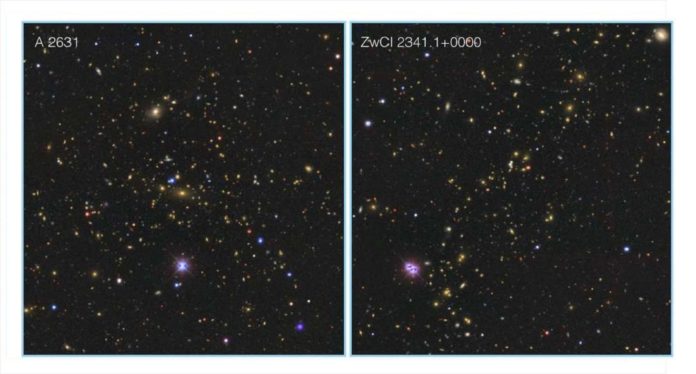A team of Indian astronomers at the Indian Institute of Science Education and Research (IISER), Pune has discovered an extremely large galaxy supercluster, Saraswati.
Almost 650 million light years across, a galaxy supercluster, Saraswati was found. Although, Space is festooned with vast ‘hyperclusters’ of galaxies and Saraswati is one of the largest superclusters among all.

supercluster. It is clearly visible that the density of galaxies is very high in the center region of the
image, that is the Saraswati supercluster region. The typical size of a galaxy here is around 250,000
light years. The galaxy sizes are increased for representation.
Joydeep Bagchi at Savitribai Phule Pune University in India and his colleagues found the supercluster. They used the data from the Sloan Digital Sky Survey, a map of galaxies in the night sky.
Pune-based Inter University Centre for Astronomy and Astrophysics (IUCAA) said, “This is one of the largest known structures in the neighborhood of the universe, 4,000 million light-years away from Earth and roughly more than 10 billion years old.”
The Saraswati supercluster is about 4 billion light years away in the constellation Pisces, much more distant than other superclusters. It is made up of at least 43 massive groups and clusters, and contains about 400 galaxies in total, giving it a combined mass 20 million billion times that of our sun.
The galaxy supercluster, Saraswati has the mass that extends over the scale of 600 million light years.

Their findings were published in the latest issue of The Astrophysical Journal.
Joydeep Bagchi from IUCAA, the main author of the paper and co-author Shishir Sankhyayan (Ph.D. scholar at IISER, Pune) said, “We were very surprised to spot this giant wall-like supercluster of galaxies, visible in a large spectroscopic survey of distant galaxies, known as the Sloan Digital Sky Survey. This supercluster is clearly embedded in a large network of cosmic filaments traced by clusters and large voids.”
“Our work will help to shed light on the perplexing question of how such extreme large-scale, prominent matter-density enhancements had formed billions of years in the past when the mysterious Dark Energy had just started to dominate structure formation.”
According to scientists, to understand galaxy formation and evolution, one needs to identify these superclusters and closely study the effect of their environment on the galaxies.
Bagchi said, “Since a structure of this vastness will only grow extremely slowly, taking many billions of years. It carries with it a sort of record of the entire history of its formation.”
“As the Saraswati supercluster was formed relatively early, it could give us a unique opportunity to characterize the early universe and probe the tiny fluctuations that expanded after the big bang to form the largest structures.”
